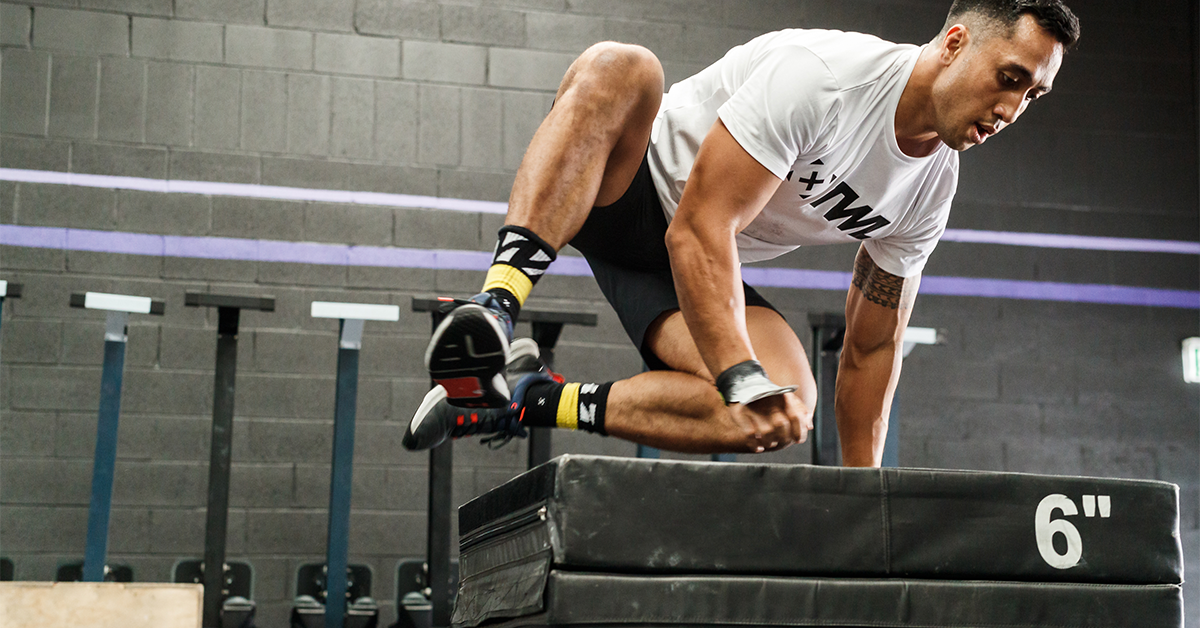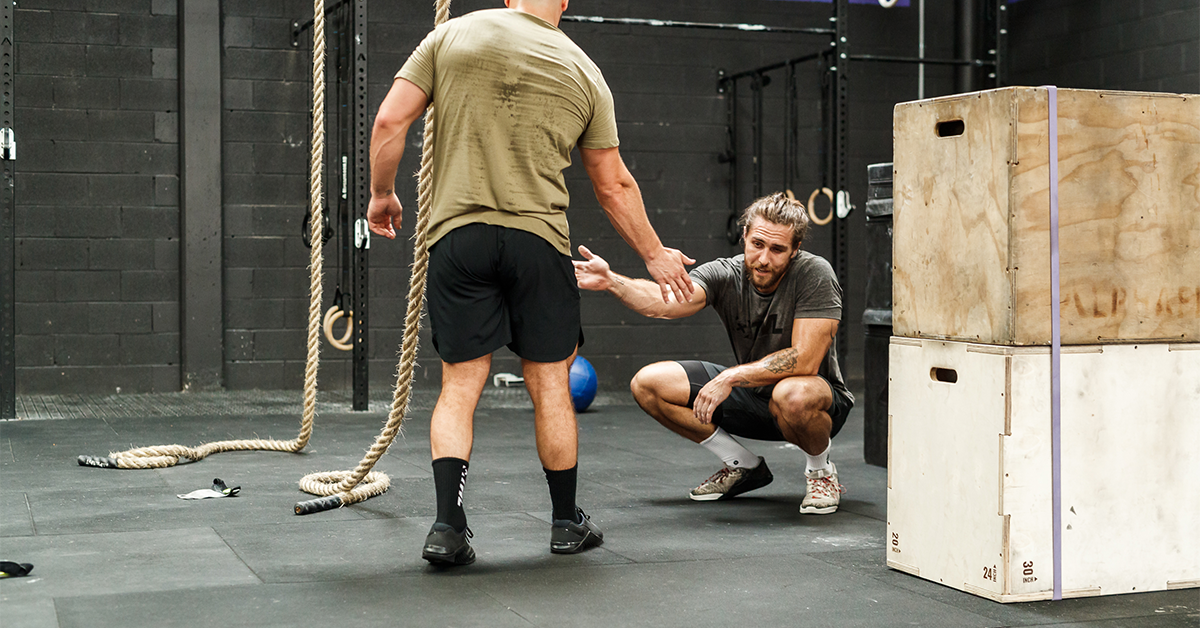Asking for little space and minimal equipment, jumps are some of the best exercises you can incorporate into your daily workouts. Jumping exercises carry many benefits, from improving posture and balance to building and toning muscle tissue. So, what jumping exercises should you integrate into your fitness program? If done correctly, the box jump is a killer cardio routine that can amplify your training and increase lower-body strength.
Shop Now
What is a Box Jump?
Doing the box jump is theoretically simple. Just stand in front of a box and then jump onto it, with both feet landing on the surface at the same time. That’s it. It’s a solid lower-body move that works the glutes, quads, hamstrings, and calves.
The box jump is simple but not necessarily easy. It still requires strength, explosiveness, timing, and technique. First, let’s break down the steps.
Psst! Don’t forget to check out our blog on box jumps for beginniners!
How to Do the Box Jump
- Stand with your feet shoulder-width apart, about one foot away from the box.
- Bend your knees into a semi-squat, brace your core, extend your hips, and lift your arms as you jump to gain momentum.
- Jump onto the box and descend in a quarter squat, with your arms swinging behind you. Both feet should land in the middle of the box, not on the edge.
- Stand upright once you have landed. Next, get down slowly, either by jumping down or stepping down one foot at a time. Then, repeat the move for reps.
This is what it looks like in action.
Doing it the Right Way: 5 Box Jump Tips for Better Efficiency
To safely and efficiently do this exercise, you’ll want to perform it with proper form, do it after a solid warm-up, and concentrate just as much on the quality of your movement as how many reps you’re knocking out. Here are some box jump tips that can help you along the way.
1. Mind Your Form!
Master the proper form to get the best results. Remember to brace your core. It’s part of what propels you upward and helps you maintain the right posture and positioning.
Don’t squat too low in anticipation of clearing the box. A quarter-squat or maybe half-squat should be enough.
Remember that landing is an essential part of this movement, as your body endures a considerable impact. Jumping and landing on a box can stress your joints and muscles. Think of landing with soft feet. If you’re slamming down on the box for your landing, consider moving to a lower height.
Speaking of which…
2. Start with a Lower Box
Sometimes, people who have never done box jumps make the mistake of choosing a box that’s too high for them. The best height varies depending on your fitness level, jumping ability, and how tall you are.
If you’re just starting to master your landing and jumping skills, start with the lowest height of your box. You might even consider using a smaller stack of plates.
Allow yourself to get used to the movement. Once you have built enough strength, explosive power, and confidence, then, by all means, choose a higher box for more of a challenge.
3. Do Other Exercises to Build Strength and Explosiveness
Getting better at box jumps doesn’t always mean repeatedly performing box jumps. From squats, sprinting, and planks to lunges and jump rope exercises, you can perform a wide range of movements that’ll ultimately translate to your box jumps.
4. Practice with Fewer Repetitions and Increase Over Time
One thing you might’ve already discovered about box jumps is that when you start to fatigue and get sloppy, things can go south. This is when you run the risk of your feet catching the edge of the box. From here, bad things can happen!
The more reps you perform, the more fatigued you’re going to get, and the more the quality of the movement is going to suffer. This is normal and safe to an extent, but never hesitate to modify a WOD so that the reps are challenging but still doable with solid form.
5. Explore Box Jump Variations
In addition to standard box jumps, try different variations to spice things up and challenge your body in new ways. For instance, you can try seated box jumps, where you start the movement by sitting down and jumping from there.
Or you can challenge yourself to burpee box jumps. Every time you land back on the floor, perform a burpee before heading into the next box jump.
The single-leg box jump has you taking off on one foot and landing on two. With this box jump variation, you’ll definitely want to start with a much lower height — even a single plate.
Rest assured that all of these variations are still going to improve your standard box jump, as well as other things you do in the gym.
Ready to Take Your Box Jumps to the Next Level?
Like most exercises in functional fitness, the box jump is infinitely scalable. Whether you’re a seasoned athlete or someone who’s just starting their fitness journey, you can benefit a lot from this movement. It’ll train both your cardiovascular endurance and total-body strength, making it a great exercise to include in your daily programming.
Try these box jump tips, slowly work your way up, and don’t be too hard on yourself, and you’ll be a pro with box jumps in no time!

















